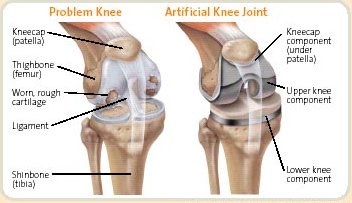Stem Cell Therapy for Knees in Malaysia 2023
Globally, stem cell therapy is being touted as a miracle cure for everything
from wrinkles to spinal repair. However, there is also a lot of misinformation
out there. Even among medical groups, the recommendations are conflicting,
lacking in depth and out-dated. As of October 2022, more than 90 studies have
been launched to investigate the benefits of stem cell therapy and knee
osteoarthritis. You can review the status of these trials on
clinicaltrials.gov.

There are various stem cell products in the Malaysian market. However, not all of the products contain 'live' stem cells. For stem cells to stay alive, it must be stored in a 'liquid nitrogen storage'. For live stem cells to reach the knee, it needs to be administered directly into the knee joint. Stem cells that are taken by the oral route will be digested and broken down in the stomach.

There are various stem cell products in the Malaysian market. However, not all of the products contain 'live' stem cells. For stem cells to stay alive, it must be stored in a 'liquid nitrogen storage'. For live stem cells to reach the knee, it needs to be administered directly into the knee joint. Stem cells that are taken by the oral route will be digested and broken down in the stomach.
To learn more about the basics of stem cells, check out stem cell basics.
We have compiled and summarised essential information on stem cell therapy for knee osteoarthritis below in layman's terms so that you can understand and hopefully make a better informed decision.
Stem Cell Therapy Cost for Knees
For allogeneic UC-MSC (Umbilical cord - Mesenchymal Stem Cells), a
25-million cell dose may be the most effective among the doses tested for
pain reduction (Arthritis Res Ther. 2016). That said, please discuss the optimal treatment with your knee
specialist as there might be other factors that might need to be
personalised to your situation.
Stem Cell Cartilage Regeneration Package for the knees in Malaysia vary from RM 15,000 to RM 20,000 per knee.
Stem Cell Cartilage Regeneration Package for the knees in Malaysia vary from RM 15,000 to RM 20,000 per knee.
Related: Knee Gel Injections Cost in Malaysia
Stem Cell Knee Cartilage Regeneration Therapy Procedure
Before you waste your money and jump into the conclusion that stem cell therapy will work for you, it's important for you to have a better understanding of your knee pain and the procedure involved.
In most cases, knee pain is caused by the most common type of knee arthritis, osteoarthritis. Osteoarthritis of the knee can affect anyone, but it usually develops in people over age 60. It’s estimated that more than 60 per cent of the worldwide population aged 60 and above has some form of the disease.
It’s a progressive disease, meaning it becomes more painful and difficult to move your knee over time.
Treatments being used range from health supplements, hyaluronic acid, platelet rich plasma (PRP), stem cell therapy, to surgical methods such as minimal invasive method to joint replacement surgery (total knee replacement, total hip replacement).
Your doctor will probably prescribe oral medications and suggest lifestyle modifications before recommending knee injections. Before you turn to surgery, weigh the pros and cons of the surgical procedure.

Stem cell therapy for knee osteoarthritis is being touted as a miracle cure for knee osteoarthritis and is a preferred non-surgical option over the more invasive total knee replacement surgical procedure.
Knee Assessment
Before performing stem cell regenerative therapy for knee osteoarthritis (OA), one must first diagnose osteoarthritis and rule out any other similar problems that might cause knee pain as well e.g. knee pain, psoriatic knee, rheumatoid arthritis etc.
Common related tests include rheumatoid factors to differentiate OA from rheumatoid arthritis, synovial fluid (fluid inside the knee) to rule out infection, x rays to rule out any fractures or non-OA causes of knee pain. Therefore a diagnosis of OA is supported by symptoms, physical examination and radiographic findings. Patients are typically more than 50 years of age, has morning stiffness for <30 minutes, clicking or locking out feeling and sounds when extending and flexing the knee joint.
Once OA is confirmed, the staging of the knee OA will need to be established (refer to the image above).
For stage 1, stem cell therapy may not be required as non-invasive options such as losing weight and appropriate physical therapy to strengthen your muscles and to have proper walking, standing and sitting habits; and supplements such as glucosamine, chondroitin and omega-3.
PRP might be suitable for stage 1 and 2 knee osteoarthritis and stem cells for stage 2 and 3. Stem cell therapy might not work for Stage 4 knee osteoarthritis.
PRP vs Stem Cells vs Exosomes
For peripheral mild to moderate tendon injuries (partial shoulder rotator cuff tears, shoulder labral tears, tennis/golfer’s elbow, carpal tunnel syndrome, mild hip osteoarthritis, hip labral tears, gluteal or hamstring tears, trochanteric bursitis, mild knee osteoarthritis, mild meniscal tears, ankle ligament sprain, plantar fasciitis and others), platelet-rich plasma is usually a good alternative of treatment. The ease of collection and lower cost are advantages. The need for repeated treatments is somewhat of a disadvantage.
If the injuries or osteoarthritis are severe, then stem cells are a better alternative. One advantage of stem cell therapy is the treatments required are less, and potential drawbacks are the cost.
The age of the patient determines whether patient’s own stem cells are used or not. After age 45, the number of stem cells in bone marrow decreases rapidly every year. The general health of the patient also contributes to the number and quality of stem cells in their tissues.
For a patient who is 50 years old or older, while PRP could be useful, a decision on whether internal sources of stem cells or external sources of stem cells (commercially available regenerative cells derived from healthy donors) to be used will need to be considered.
There is a plethora of these commercially available products, ranging from growth factors derived from placental tissues (umbilical cord blood, amniotic fluid, Wharton’s jelly, etc) to stem cells derived from donors.
Exosomes are the result of a purification process of stem cells. The result is a concentration of proteins, messenger RNA (mRNA) and growth factors, without any of the original cell’s DNA. The lack of DNA makes rejection of these cells impossible so it lowers the risk of their use.
Therefore, for an older patient with moderate osteoarthritis, a combination of patient’s own PRP and commercially available exosomes might be a viable and balanced option.
Discuss with your doctor and choose the least invasive method to begin with.
Stem Cell Therapy for Knee Osteoarthritis Evidence and Reviews
Regenexx, the largest provider of stem cell therapy for orthopaedic conditions in the United States have treated 30,000 patients with stem cell therapy for various joint conditions including knee pain.
Here, we have compiled and updated a few major studies and related review to stem cell therapy for knee pain.
Dec 2019 - A related review - Allogeneic Versus Autologous Injectable Mesenchymal Stem Cells (MSC) for Knee Osteoarthritis (OA): Review and Current Status. The review and analysis concluded that MSC therapies in the treatment of knee OA are safe and have shown promising results but the available studies are limited. At this time, no definitive recommendations can be made regarding which MSC source to use. Allogeneic (source from different individuals) MSCs offer theoretical advantages over autologous (source from self) MSCs, especially in ease of use and consistency of product, but there are concerns regarding cell viability and vitality, as well as the body's response to non-autologous products. Future clinical trials should focus on head-to-head comparisons of MSC sources as well as the use of multiple injections for patients with knee OA.
In 2016, a 9 year follow up study of 2,372 patients in 18 clinical facilities was published by Centeno et al. Treated areas of the body included the knee, hip, ankle/foot, hand/wrist, elbow, shoulder, and spine. There was no evidence to suggest that treatment with mesenchymal stem cells (MSCs) of any type in this study increased the risk of cancer.
In 2016, a study on knee osteoarthritis has shown a 25 million of adult human bone marrow, allogeneic (source from different individuals) mesenchymal stromal cells to be the most effective dose tested for knee joint pain reduction.
Another clinical study published in 2015, showed allogeneic (source from different individuals) MSC (mesenchymal stem cells) improved cartilage quality. The test group was treated with 40 million cells of allogeneic bone marrow mesenchymal stem cells (MSCs) by injection into the knees.
About Stem Cell Therapy Malaysia
Stem Cell Therapy Malaysia is part of a regional network of specially trained multi-disciplined medical doctors and specialists, providing advanced, research-driven, stem cell therapy treatments in Malaysia.Stem Cell Therapy Malaysia has 9 partner clinic locations in Klang Valley i.e. Gleneagles Kuala Lumpur, Subang Jaya Medical Centre, Life Care Medical Centre, Assunta Hospital, Publika KL, Petaling Jaya, Ampang, Shah Alam and Seri Kembangan.
WhatsApp:









Comments
Post a Comment